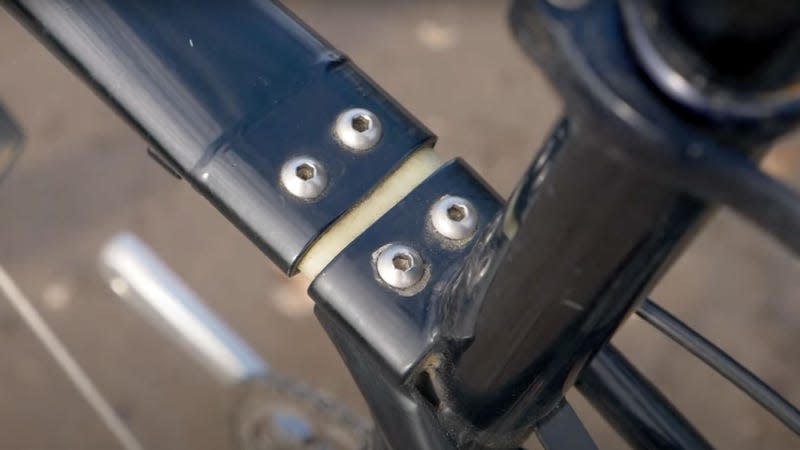This Wild 1990s Mountain Bike Is Held Together by Springs

It looks like there’s a piece missing.
In one form or another, mountain biking has been around for decades. It’s a simple sport to get into, as you just need a bike and somewhere with no roads to ride on. In its early days, the sport saw people simply head off the beaten track on their old bone-shakers, and it wasn’t until the late 20th century that people started creating dedicated off-road riders.
Now, mountain bikes can look a far cry from their city-dwelling counterparts thanks to chunky tires, wide handlebars and complex suspension systems. A lot of these designs owe their existence to the 1990s, when mountain bike design went off the rails.
Read more
At the end of the 20th century, riders realized that if they wanted to head off road, they would be better suited with a more specialist machine. As such, bike builders started picking features from other sectors to try to create a bike that could handle itself off-road. This included the lower seat you find on a BMX, more powerful brakes and early forms of suspension to soak up the bumps and ruts on the trail.

From this angle, it all looks pretty normal.
One early design that brought suspension to the off-road world in a crazy way is the Slingshot, which is basically held together with springs.
Designed in the early 1990s, it features a joint in the steel frame’s top bar that was plugged with a piece of fiberglass. Rumors suggest this piece was taken from the leaf springs in an old Corvette, but wherever it came from, the piece gives the top bar some flex to absorb bumps.
Below that is the bike’s real party trick, a steel cable and spring that replaces the down tube you normally find on a bike’s frame. This was a design that creator Mark Groendal had been toying with since the 1970s, as Pink Bike explains:
“The first iteration of the concept came in the form of a BMX bike that was released in the early 1980s, and in 1987 Groendal was awarded a patent for a ‘flexible bicycle,’ one where ‘the front frame portion can flex with respect to the rear frame portion by flexing the fiberglass spring plate and tensioning the cable against the bias of compression springs holding the cable in tensioned condition’.
“As mountain biking’s popularity grew, Groendal and his brother began making 26” wheeled versions using the same concept.”

Warning: May contain Corvette parts
The designs were tweaked and finessed until 1992, when Groendal’s Slingshot company created its 1992 Team Edition bike, which showcased the crazy design in all its glory. It looks slick and really opened the floodgates for crazy designs in the mountain biking world.
GMBN Tech has a great video that breaks down all the other components that went into this bike. Check it out below to find out what went into creating such a crazy-looking bike.
The Slingshot Bike Check | Is This The Weirdest Retro Bike Out There?
Perhaps the maddest thing about this bike is that it’s still available to buy today! Slingshot now has a range of bikes that all use this design, including mountain and road-riding models.
More from Jalopnik
Sign up for Jalopnik's Newsletter. For the latest news, Facebook, Twitter and Instagram.

 Yahoo Autos
Yahoo Autos 